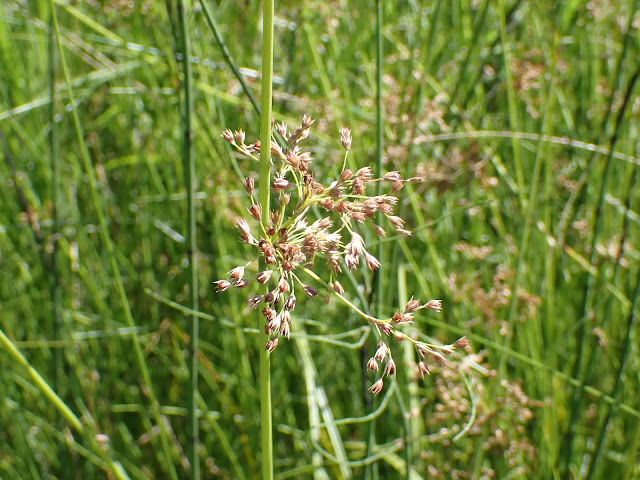Swamp Things
By guest contributor and collections volunteer, Jan Sharp.
What better way to spend a pandemic summer than collecting plants for the Cable Natural History Museum herbarium? For the last two years, driven in part by my own curiosity about plants, I randomly explored some swampy areas, collected specimens, dried them in my press, and documented the entire process. Specimens ultimately were mounted on special paper, labeled, and placed in the appropriate plant family folder in the Museum herbarium for use as teaching tools and exhibits.
Fifty years ago, when I spent summers up here as a teenager, I started collecting plants and pressing and drying them. I made my own plant press and read up on the subject at the time. I concentrated on flowering plants though, dicots specifically. These were the showy, sexy plants in the day, with their colors and shapes so attractive to equally beautiful and showy pollinators.
The last two years, I have discovered the clubmosses, horsetails, ferns, sedges, and rushes while exploring mostly swampy areas. None are necessarily as “showy” as the flowering plants known as dicotyledons, with colors and unusual flower forms. As Lois Nestel called them, the “underdogs.” But these underdogs have a grace and beauty all their own; single stems with bulbous heads of spores, hanging pendants of spiky jewels, masses of hairy, craggy seed heads, and spikes of separate male and female flowers separated by space along the stem.
Clubmosses are among the oldest vascular plants and grew the size of trees hundreds of millions of years ago. Horsetails and ferns followed in evolution, reproducing with spores and preceding the seed plants. Rushes, sedges, and grasses are much more recent and related, with grasses thought to be the most recently evolved flowering plants.
 |
| Miniature trees of the forest - tree clubmosses or groundpines are part of a complex of species often resembling trees or branches of true conifer trees. Photo by Jan Sharp. |
Clubmosses look like mosses but are vascular plants with terminal spikes of spores. They can stay green into the winter under the snow. You have all probably seen the miniature Christmas trees in the woods, in this case looking more like a miniature conifer than moss. Prickly tree clubmoss is one of the many names, and it will shoot up a spike of spores at the end of summer.
 |
| Horsetails are extant species of a family of vascular plants that reproduce by spores rather than seeds. |
Horsetails were among the first plants to capture my fascination last year – single, leafless stems popping up from the ground. With most, the fertile plant is leafless, while the sterile one sends out thin leaves from nodes on the stem. Wood horsetail sends out finely branched leaflets and the fertile ones produce a cone of spores called a strobilus. Horsetails are easy to miss along wood edges and in fields, hiding in plain sight among the grasses and greenery.
 |
| Ferns, ranging from grape-ferns to cinnamon ferns, are admired for their perfect symmetry and arching fronds. |
Ferns can rival the flowering angiosperms in beauty simply from their perfect symmetry and arching fronds. Dozens of species exist in our area, from the smallest grape-fern to the large cinnamon fern with its bright orange fertile frond emerging straight up from the base. After years of automatically knowing the family of our most familiar flowering plants simply by looking at it, ferns turned out to be the hardest to distinguish at a glance, with all the subtleties of pinnae and toothed pinnules and spore sacs (called sori) on the undersides of pinnules.
The rushes, sedges, and grasses are all closely related evolutionarily, with grasses having evolved most recently from the larger angiosperm group. The three groups have hundreds of species, with the vast majority being wetland plants. The rushes and sedges are another group I ignored in my youth, thinking they were just another grass. Considering all the apparent similarities, it raises the question, what’s a sedge from a rush from a grass?
Sedges have edges, rushes are round, grasses have knees that bend to the ground.[1]
 |
| Soft rush are common in our area and easily mistaken for a grass. |
We are all familiar with rushes. That shiny, round, green stem with the funny top sometimes emerges from the side of the stem, next to our docks. The soft rush is a very common one in our area. Look at a small “grass” in your driveway sometime. A miniature rush, that is easily mistaken for a grass, is path rush. It thrives on paths and driveways where it gets run over and walked on all the time.
 |
 |
| Tussock cotton grass (above) is actually a type of sedge, blooming early in spring. Dark-scale cotton grass (above) appears mid-summer with multiple tufts of cotton. |
Sedges usually have triangular stems. They are the predominant plants in many bogs and other wetlands. But one of the more common ones is probably in your own woodlands: the small Pennsylvania sedge. Many may mistake it for grass at first. However the small spikes in the spring distinguish it immediately. And those wispy, white balls of cotton seemingly hanging in midair above most of our bogs and swamps, aptly named cotton grass, are a type of sedge. There are several different species, each “blooming” at different times of the season. Tussock cotton grass is the first, popping up among the hummocks in the bog in the spring. Dark-scale cotton grass appears mid-summer with multiple tufts of cotton.
And what of the grasses? Well, I can’t do them all in one season! One of my goals for next year is to start to get to know them better.
